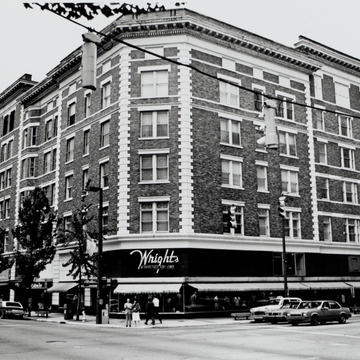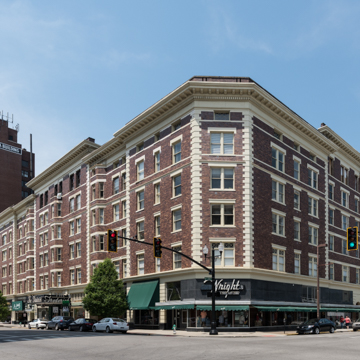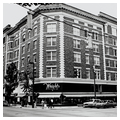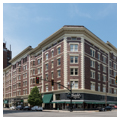You are here
Frederick Building (Hotel Frederick)
Above a first floor of shopfronts, four stories of hard-pressed reddish-brown brick are trimmed with a plethora of cream-colored quoins, sills, lintels, and entablature. These details, the several polygonal bays they define, and varying
When the hotel opened, architect Alger provided Huntington's Advertiser with a full description, pointing with pride to the circular lobby's “Renaissance Architecture” and “light cloud marble” finish. The cigar stand was ebony, and the barbershop off the lobby had a three-foot Italian marble wainscot, above which was “one unbroken line of mirror.” The Turkish bath in the basement featured “hot vapor rooms and rubbing slabs.”
Today the Frederick serves primarily as offices, and, although a later remodeling has blanketed most of the “Renaissance architecture” of the oval (not circular) lobby, the original, brilliantly colored stained glass skylight, recently cleaned and restored, continues to brighten the space.
Writing Credits
If SAH Archipedia has been useful to you, please consider supporting it.
SAH Archipedia tells the story of the United States through its buildings, landscapes, and cities. This freely available resource empowers the public with authoritative knowledge that deepens their understanding and appreciation of the built environment. But the Society of Architectural Historians, which created SAH Archipedia with University of Virginia Press, needs your support to maintain the high-caliber research, writing, photography, cartography, editing, design, and programming that make SAH Archipedia a trusted online resource available to all who value the history of place, heritage tourism, and learning.

















